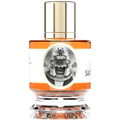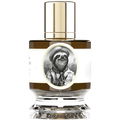03/01/2017

jtd
484 Reviews

jtd
Very helpful Review
3
~~~~~
Victor Wong has used a model of art direction to build the Zoologist Perfumes line. As the brand’s owner and artistic director Wong commissions work from independent perfumers and collaborates with them to shape the perfumes. I’m interested in commissioned work because it allows an artist to step outside of herself to try on a new persona/style. The work can shift expectations and find a new audience.
Wong has used this approach to create a consistent but broad aesthetic for his brand. The line has expanded to include a number of genres, but the potent eau de parfum concentration of the perfumes, excellent presentation and cheeky anthropomorphic animal themes give the line coherence. Sarah McCartney is the author of the 4160 Tuesdays line of perfumes. She approached approached Wong, upending the pattern of the director pursuing nose, and then set herself a particular challenge by choosing a green perfume as her topic. Macaque is the second green woody perfume in the line after Paul Kiler’s Panda. Third if you count Chris Bartlett’s Beaver, which is a musky green floral. (Fourth if you count the reformulated Beaver.)
Cedar and frankincense reinforce galbanum’s balsamic olfactory profile and give Macaque backbone. The core of the perfume holds a coherent shape from start to finish, giving the more volatile aromas a chance to run their course at their own pace. McCartney makes the connection between wood and fruit via sap. Unripe fruit tends to be chalky and starchy, qualities often used to describe galbanum. At the cusp of ripeness, fruit is effectively resinous. McCartney takes advantage of this particular aspect of fruit to generate woody fruit notes. Her approach short-circuits the expected associations of green perfumes with springtime breezes, chirping birds and butterflies.
Macaque is painted in broad strokes and generates deliberate juxtapositions. The ‘sap accord’ defines the perfume and gives it a bittersweet balance. McCartney does some of sleight of hand in the drydown, recreating the balance with a different accord. For most of the perfume it is the mash-up of fruit and galbanum that produces bitterseetness but in the basenotes, fruit is replaced by a sweet muskiness. The slight dissonance of sweetness and bitter inkiness extends through the life of the perfume. It’s a clever use of a soft musk, avoiding the bland ‘soft landing’ white musks give to many contemporary perfumes.
Galbanum is such a particular and forceful scent that many perfumes that use it become penned in by it. It defined the vivid green perfumes of the 1960s-’70s and has unfortunately acquired a retro vibe. McCartney dives headlong into the material and implicitly begs comparison to some heavy hitters of the past, like Chamade, Chanel 19, Aliage and Safari. It’s a gutsy move and one that pays off by focussing our attention away from the bright floral stylings of these older perfumes and toward a more dusky, vegetal interpretation. McCartney succeeds in shaking off associations with the past and places Macaque solidly in the present.
from scenthurdle.com
Wong has used this approach to create a consistent but broad aesthetic for his brand. The line has expanded to include a number of genres, but the potent eau de parfum concentration of the perfumes, excellent presentation and cheeky anthropomorphic animal themes give the line coherence. Sarah McCartney is the author of the 4160 Tuesdays line of perfumes. She approached approached Wong, upending the pattern of the director pursuing nose, and then set herself a particular challenge by choosing a green perfume as her topic. Macaque is the second green woody perfume in the line after Paul Kiler’s Panda. Third if you count Chris Bartlett’s Beaver, which is a musky green floral. (Fourth if you count the reformulated Beaver.)
Cedar and frankincense reinforce galbanum’s balsamic olfactory profile and give Macaque backbone. The core of the perfume holds a coherent shape from start to finish, giving the more volatile aromas a chance to run their course at their own pace. McCartney makes the connection between wood and fruit via sap. Unripe fruit tends to be chalky and starchy, qualities often used to describe galbanum. At the cusp of ripeness, fruit is effectively resinous. McCartney takes advantage of this particular aspect of fruit to generate woody fruit notes. Her approach short-circuits the expected associations of green perfumes with springtime breezes, chirping birds and butterflies.
Macaque is painted in broad strokes and generates deliberate juxtapositions. The ‘sap accord’ defines the perfume and gives it a bittersweet balance. McCartney does some of sleight of hand in the drydown, recreating the balance with a different accord. For most of the perfume it is the mash-up of fruit and galbanum that produces bitterseetness but in the basenotes, fruit is replaced by a sweet muskiness. The slight dissonance of sweetness and bitter inkiness extends through the life of the perfume. It’s a clever use of a soft musk, avoiding the bland ‘soft landing’ white musks give to many contemporary perfumes.
Galbanum is such a particular and forceful scent that many perfumes that use it become penned in by it. It defined the vivid green perfumes of the 1960s-’70s and has unfortunately acquired a retro vibe. McCartney dives headlong into the material and implicitly begs comparison to some heavy hitters of the past, like Chamade, Chanel 19, Aliage and Safari. It’s a gutsy move and one that pays off by focussing our attention away from the bright floral stylings of these older perfumes and toward a more dusky, vegetal interpretation. McCartney succeeds in shaking off associations with the past and places Macaque solidly in the present.
from scenthurdle.com






 Top Notes
Top Notes  Green apple
Green apple Cedar
Cedar Red mandarin orange
Red mandarin orange Heart Notes
Heart Notes  Galbanum
Galbanum Frankincense
Frankincense Honey
Honey Jasmine tea
Jasmine tea Rosewood
Rosewood Ylang-ylang
Ylang-ylang Base Notes
Base Notes  Green tea
Green tea Musk
Musk Tree moss
Tree moss White oud
White oud









 Holscentbar
Holscentbar Fantasmarg
Fantasmarg HugoMontez
HugoMontez






















